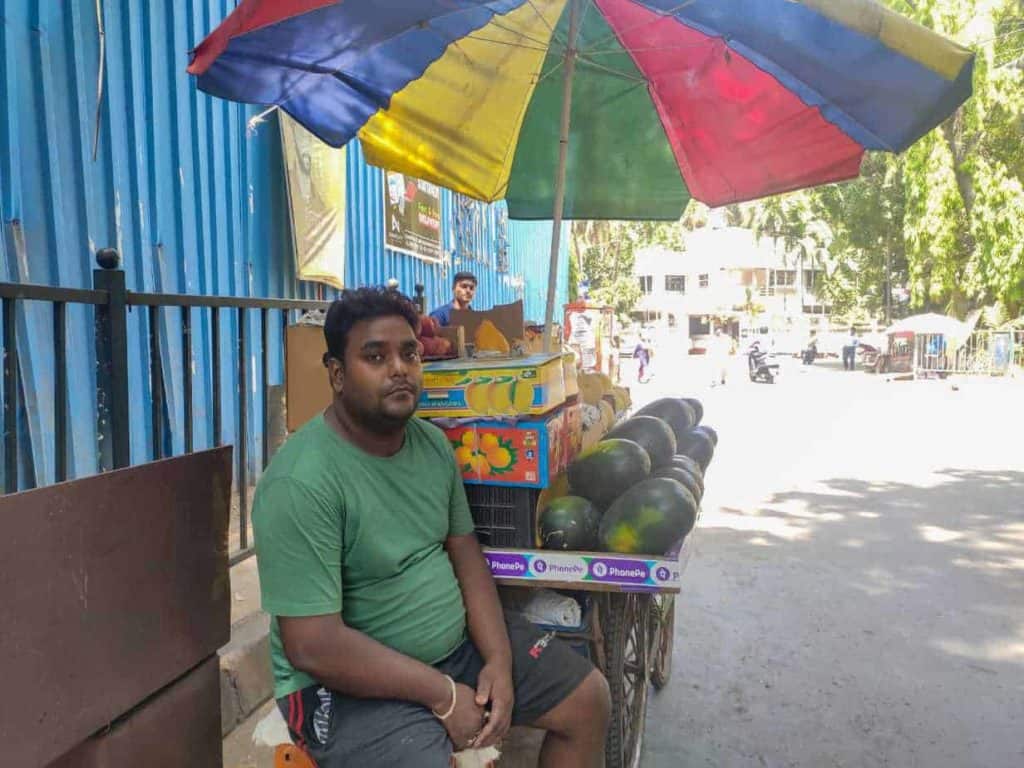Once upon a time in Delhi, even when summer day temperatures hovered over 40 degrees C, the city would cool down considerably after sunset, bringing the minimum temperature in the range of mid 20 degrees C. But what we have seen during the recent spate of heat waves is not even remotely reminiscent of that.
Today, the city does not cool down after sunset: the heat exhaust from millions of air conditioners in residences and offices and central air conditioning in commercial and institutional spaces raises minimum temperature to or above 30 degrees C.
According to Avikal Somvanshi, programme manager of Sustainable Cities Programme of the Delhi-based Centre for Science and Environment (CSE), power demand in the capital was 4336 MW in April 2022, almost double the demand for the same month in 2020.
“Heat waves have already become a seasonable event and we have no choice but to adapt to them,” says Somvanshi, who was closely associated with the preparation, in 2018, of the union government’s effort to draft an India Cooling Action Plan. It gave him an opportunity to include some of the lessons he had learnt over the years about climate, design habitat, homes and city.
Read more: Heat wave information: What to look out for and where?
Somvanshi’s first brush with “environmentalist politics” happened in 2007, when as a student of architecture at the Shri Mata Vaishno Devi University, he participated in a summer school programme at the Delhi-based Centre for Science and Environment (CSE).
But the “awakening moment” for him was while working at Auroville in Puducherry. The “sustainable” house he had built there for himself using bamboo all but got blown away with the first strong breeze. The realisation that people have to adjust their lifestyle and their perception of comfort to their homes made the architect start looking at buildings, energy efficiency and design.
“We were clear it had to be more about adaptive thermal comfort, and not just about thermal comfort which is air conditioning,” says Somvanshi about his work on the cooling action plan, which recommended an “adaptive thermal comfort standard” of 28-32 degrees.
He rues that the India Cooling Action Plan, released by the Union Environment Minister in 2019 is gathering dust. As are the National Disaster Management Authority (NDMA)’s Emergency Action Plans on dealing with heat waves .One of these pertains to reserving hospital beds for patients with heat stroke.
Given the IMD’s forecast for a very hot May, Citizen Matters decided to interview Avikal Somanshi to learn more about his ideas and recommendations on how to cope with heat waves.
Excerpts from the interview:
What kind of heat waves are we likely to witness in May-June?
They are likely to be dry with low humidity levels. These dry heat waves are common during May-June, but their current spells in April are unusual.
What will be its impact on people?
Instances of heat-stroke are common during these heat waves with low humidity. High heat makes working outdoors during daytime dangerous. But given the fact that the night temperature is still dropping below 28 degrees C, people are getting some reprieve to recover from the daytime heat exposure.
How can deterioration of air quality from heat waves be minimised?
Heat waves do impact air quality but not in the way we see during winter in Delhi. The more direct impact of heat waves is increased formation of surface ozone pollution. Surface ozone formation takes place when oxides of nitrogen and volatile organic compounds (VOC) react with oxygen in the air and this reaction requires sunlight and heat to happen.
If all other variables are equal, such as the level of precursor emissions — emissions of carbon monoxide (CO), oxides of nitrogen (NOx), non-methane volatile organic compounds (NMVOCs), and sulphur dioxide (SO2) in greenhouse gas inventories—in the air and wind speed and direction, more surface ozone will form as the environment becomes sunnier and hotter. During heat waves, these environmental conditions are met and this leads to a spike in surface ozone pollution.
This is a major public health concern as surface ozone is highly toxic and can lead to severe health outcomes even from short term (one hour) exposure.
Rising deaths
The aggregated data available from National Crime Records Bureau (NCRB) for 2000-2014 notes that Heat Stroke causes more deaths than due to “cold exposure”. Only lighting and earthquakes killed more people than heat stroke during 2000-14. NCRB’s annual publication “Accidental Deaths & Suicides in India” for 2019 attributed 1,274 deaths to heat stroke and 796 in 2019. The number for heat stroke deaths came down to 530 in 2020, most possibly due to hard lockdowns during the summer of 2020. The most deaths due to heat stroke are reported from Andhra Pradesh, Telangana, UP, Bihar, and Maharashtra.
Which are the most vulnerable population segments?

- Older adults are among the most vulnerable to extreme heat events.
- Many physiological, psychological, and socioeconomic factors contribute to this danger. Older adults are more likely to be in poor health, to be less mobile and more isolated, to be more sensitive to high heat, and to live on reduced incomes.
- Young children tend to be more susceptible to extreme heat due to their small size. Children’s more rapid breathing rates relative to body size, time spent outdoors, and their developing respiratory systems raise the chances of aggravated asthma and other lung diseases caused by ozone air pollution and smog, which usually increases during heat waves.
- Populations with low-income are at greater risk of heat-related illnesses due to poor housing conditions and small living spaces, and inadequate resources to find alternative shelter during a heat wave.
- People who spend their working hours outdoors are more prone to conditions such as heat exhaustion and heat stroke. They have higher exposures to ozone air pollution and heat stress, especially if work tasks involve heavy exertion.
- People in poor health, including people with chronic conditions, disabilities, mobility constraints, and those taking certain medications, are vulnerable to extreme temperatures. People with diabetes, physical impairments and cognitive deficits are especially at risk during heat waves.
What lessons can we learn from the way our ancestors dealt with heat waves?
Culturally, most regions in India had developed their own practices to safeguard themselves from the impact of heat waves. The practice of afternoon siestas are effective in reducing heat exposure. The practice of consuming nimbu pani, sugarcane juice, aam panna, bel sherbet, and many such hydrating and cooling drinks helps the body fight the heat. Even meals during summer used to be altered to include vegetables and recipes which helped the body to manage heat better.
One of the most important aspects of dealing with heat waves was the building designs which shielded the indoors from the sun and the dry winds. A wisdom which has been lost in modern building designs. Modern buildings are heat magnets instead of being a shelter from heat. Buildings made of concrete and glass especially trap heat and makes it almost impossible to live inside these buildings without using ACs. These ACs produce heat exhaust that is dumped right outside leading to more outdoor heat.
As part of climate change, will heat waves become a regular feature in the near future?
Heat waves have already become a seasonal event and are predicted to get worse in coming years thanks to climate change. We have no option but to adapt to these heat waves. And to do so we will have to change how we function during summer.
This means changing school calendars and office timings, and not just these. We need to start rethinking what we are eating. Our food habits will help our body to handle heat better. Farmers will have to shift to more heat resistant crops that can be grown with relative ease in this new climate. Similarly, we need to redesign our homes, offices, shops etc. We need to bring back the traditional wisdom of shading our windows and catching the cool breeze that made the homes of our ancestors comfortable.
We also need to rethink the idea of being comfortable. Wearing a three-piece suit during summer for the sake of fashion or corporate look is blatantly stupid. Similarly, freezing down one’s room to an extent that one needs to wear a shawl or blanket during summer is not comfortable. In fact, it makes the outdoors hotter.
Is there anything positive about heat waves?
Heat waves don’t have any positive spin in my understanding of the issue.

Sobering read and practical suggestions given if our powers that be could courageously implement some of the suggestions especially the influx of tourists who provide an income and livelihood but at a great cost to those very communities who stay behind after the tourist leaves.